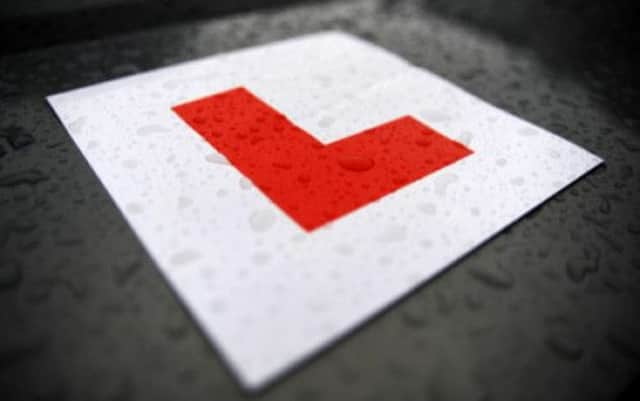Learner drivers: Data shows men and women’s errors


New data has revealed the most frequent mistakes committed by men and women while sitting their driving tests in Scotland.
While the fairer sex are far more likely to fail while parking or reversing, their male counterparts are more guilty of driving recklessly and ignoring mirrors and road signs.
Advertisement
Hide AdAdvertisement
Hide AdMotoring experts said the figures reveal how the gender divide throws up different “traits and talents” on each side, as well as foibles.
Men, they said, appear to keep a “lead foot” on the accelerator, compared with the “compliant” speeds women drive at.
The new data, released under freedom of information legislation, shows that women learners committed 68,217 serious or dangerous faults while sitting practical tests last year, compared with 52,144 faults by men.
Out of 51 types of serious and dangerous faults, females erred more often than males in no fewer than 43 categories.
The greatest gender disparities emerged when drivers were asked to park or control their vehicle while turning.
Tasked with many learners’ worst nightmare – reverse parking – there were twice as many faults by females as there were by males. While the latter committed 1,652 errors by failing to control their car during the manoeuvre, the figure rose sharply to 3,367 among women.
Similarly, there were more than three times as many faults recorded by women as men when asked to control the car while turning in the road.
Another aspect of the test, reversing to the left, saw 1,322 faults from men who failed to control their vehicle, compared with 3,251 at the hands of women.
Advertisement
Hide AdAdvertisement
Hide AdThe breakdown of failures shows that the most common offence for women during their test was failing to make proper observations at junctions, with 8,612 culpable in 2012.
However, men were guilty of a range of offences. While there were 2,050 instances of women failing to respond properly to traffic signs, the number rose to 2,127 among men.
On a similar theme, more male drivers flunked their test after failing to move off safely (2,279 compared with 2,247) or failing to use their mirrors before signalling (520 versus 477). More men (26) than women (ten) failed for having poor eyesight.
RAC spokesman Pete Williams said: “The debate about who makes the better drivers, men or women, is almost as old as the motor car itself.
“These results do apparently demonstrate that there are some differences when it comes to reversing and parallel parking. Clearly there are some traits and talents that are more prominent in the different sexes.
“Generally men appear to have a lead foot when it comes to the accelerator, while women appear to be more compliant when it comes to speed limits.”
Others, however, suggested that nerves rather than gender were a far greater influence on the outcome of a driving test.
Jim Kirkwood, managing director of AA Driving School, said: “Problems like failing to stop at traffic signs and issues with manoeuvring are more likely to come down to nerves on the day, rather than someone’s gender.
Advertisement
Hide AdAdvertisement
Hide Ad“If you fail your test for something like failing to stop or incorrect use of mirrors then you really need to work on your observation skills before you try the test again.”
He added: “If manoeuvring is your downfall then practice is the key, as well as remaining calm on the day.
“Learners, regardless of their gender, should get a good night’s sleep before their test, take some deep breaths before they start and try to remember they wouldn’t be taking their test if their instructor didn’t think they were ready.”
The category failed by the fewest drivers during 2012 was lack of knowledge of the Highway Code, with just two men and five women across Scotland losing out on their licence as a result.
According to the DSA, there were 1.57 million practical car tests carried out in Britain last year, with an overall pass rate of 46.3 per cent.
The pass rate for men was 49.6 per cent, while for women it stood at 43.3 per cent.
The total number of errors recorded by the DSA far exceeds the number of practical tests taken during the same period, as many candidates who failed made multiple serious or dangerous faults.
Driving test performance is not the whole story, the motoring experts said. Traditionally, lower car insurance premiums enjoyed by women suggest that after passing their tests they go on to become better drivers than men.
Twitter: @MartynMcL